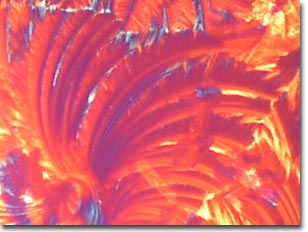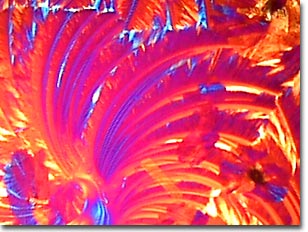Advanced Condenser Systems: Achromatic Condensers
Citric Acid Crystallites
The images below compare performance of the Intel Play QX3 Computer Microscope with and without the aid of an organized cone of illumination from an achromatic substage condenser containing an aperture diaphragm. These photomicrographs are unretouched and were captured with the QX3 interactive software.
Birefringent Citric Acid Crystallites


Citric acid is a colorless organic tri-carboxylic acid that is commonly found in citrus fruits such as lemons, limes, and oranges. In biochemical intermediary metabolism, citric acid is heavily involved in the tricarboxylic acid or Krebs cycle that occurs in all plants and animals as well as most bacteria. The citric acid cycle is confined to the mitochrondia and was discovered in 1937 by British biochemist Sir Hans Adolf Krebs. During metabolism, carbon-containing food molecules are degraded into small two-carbon units known as acetyl groups that combine with oxaloacetate to form citric acid. The citric acid molecule is then oxidized to provide energy to synthesize adenosine triphosphate (ATP) and guanosine triphosphate (GTP). As the cycle is completed, the original molecule of oxaloacetate is regenerated and can be used to start the citric cycle once again. Commercially, citric acid is used as a flavor chemical for pharmaceutical and food products such as sodas and candy. It also enjoys widespread use as a metal cleaner and to reduce the pH of canned foods.
The images above were recorded using the Intel Play QX3 microscope in transmitted brightfield mode equipped with crossed polarizers and a full-wave retardation plate. On the top is a digital image from a stock QX3 microscope using auxiliary illumination provided by a fiber optic light pipe through a hole drilled into the mixing chamber. The image on the bottom was recorded using the QX3 microscope body and a Nikon achromatic substage condenser of low numerical aperture.
BACK TO TRANSMITTED POLARIZED ILLUMINATION GALLERY
